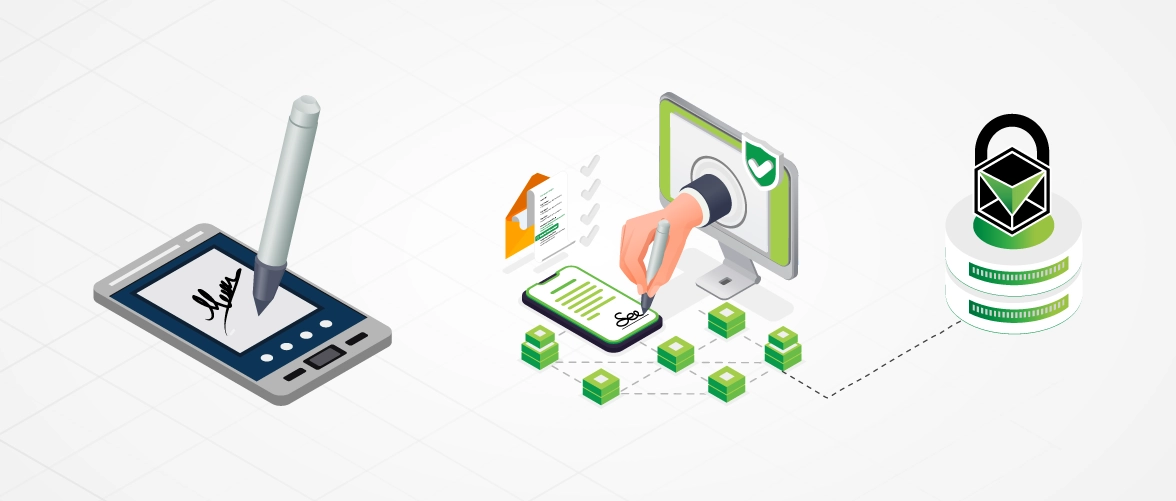What's The Difference Between Electronic & Digital Signature
05 Nov 2024

With the changing times, organisations worldwide welcome new technologies that make their work easier, faster, and more productive. It is the age of digitization, and change is the new constant.
One such beneficial new software is electronic signature solutions. Most well-established companies and startups are about getting more work done without excessive manual labour. Nobody needs to waste more time and resources signing and storing documents.
We often use the terms digital signature and electronic signature as synonyms. Usually, when we come across these terms, their meanings seem identical. However, they are not interchangeable.
VeriDoc Sign explains these two important terms that might feel the same but are not. What is the difference, then? Let us discuss this.
Difference Between Digital And Electronic Signatures.
While the digital signature is a kind of electronic signature, they are distinct. A digital signature is a more secure version. You can not tamper with it. In addition, it encrypts the document to embed the information permanently.
On the other hand, an electronic signature is very similar to a digitised handwritten signature. However, this signature gets the verification from the signer's identity, like phone PIN, email, etc.
What Is A Digital Signature?
A digital signature implements specific electronic signatures by applying mathematical schemes. Thus, digital signatures often refer to a coded or decoded technology. Some of the electronic signatures are based on this technology.
To explain further, a digital signature refers to a set of characters you add at the end of a document. This signature certifies that the document is valid and secure. So, we use these signatures to identify the person who issues the message. You can also warrant that the document is not modified at all.
Digital signatures also represent the process when you encode a document with encryption or other methods of tampering prevention through algorithms. Once you add a digital signature, no one other than the recipient can view the document. So you can be sure it is safe. Simply put, a digital signature acts as a fingerprint for the users when they go for transactions. It guarantees the authority of the person.
What Is An Electronic Signature?
An electronic signature is just data that refers to other electronic data. You can use it to verify,
a person's intent to sign a document,
the signer's identity and
the document's transparency.
An electronic signature is thus a legal concept that aims to certify any signatory's will.
You can capture a person's process to demonstrate the intent while having an electronic transaction. The term refers to different methods of capturing a signature on a device or paper. For example, say you are typing your name on a box using a mobile app. The action also falls under an electronic signature. An example of such an app is delivery slips.
When you use electronic signatures, you apply a technology that binds the signer's identity to the signature. It can be in the form of a process attached, a sound, or an electronic symbol. Esigns are more like a substitute for handwritten signatures.
The essential components of an electronic signature are the signer's intent and the document's accuracy. To ensure your electronic signature is valid, you need to verify it.
So, the key differences are:
Digital Signatures secure a document. Whereas an electronic signature verifies it.
The certification authority regulates a digital signature. On the other hand, electronic signatures use applications of some regulations and national acts to validate them.
The government or non-government certifications authorise a digital signature. Specific vendors, document creators, etc., can authorise an electronic signature.
If you consider a document processing platform, a digital signature can be primarily of two types: Adobe pdf and Microsoft. In contrast, an electronic signature can be of four kinds: basic eSignatures, advanced eSignatures, click-to-sign, and qualified eSignatures.
An electronic signature is an umbrella term. Under electronic signature, you can include more than just electronic data. However, a digital signature is often just public-key-based cryptography.
With fast-paced businesses, newer technologies are entering the market to make work simpler and faster for all. Electronic signature solutions are one such technology that makes any workplace advanced and efficient. VeriDoc Sign eSign solution is designed to be used in many sectors and by people looking for smarter, faster, and more productive ways to sign and manage documents.